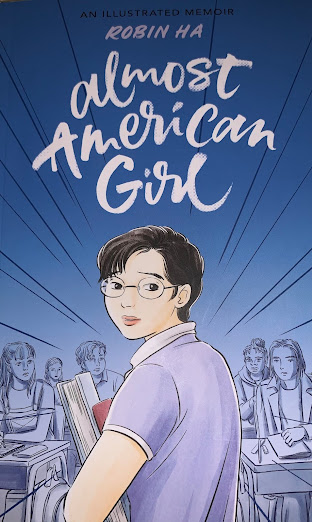A Face for Picasso: Coming of Age with Crouzon Syndrome
A Face for Picasso by Ariel Henley
Reviewed by Allyson Valdez, Isabella Vergolino-Holiday, Aaron Valenzuela, Natalie Vargas
Review:

Biography:
Henley has a BA in English and Political Science and a Master’s in Education, specializing in Organizational Leadership and Student Affairs. As expressed in her book, Henley was initially interested in teaching during her undergraduate years and, instead of becoming a teacher, offers services as a DEI consultant in the classroom with accessibility branding toolkits. These services and training extend to the corporate workplace, therapists/mental health professionals, and speaker/ panelist events. Henley's day-to-day career also includes acting as a sensitivity reader, providing editorial services for those writing a memoir or seeking guidance on publication, and working as a counselor for those with facial differences.
Her experience as a person with a facial disfigurement leads her writing and work, specializing in ableism and lookism in a society focused heavily on appearance. In her book and line of work, Henley uses an intersectional perspective to examine how spaces can work to be more inclusive by examining one’s personal bias. Her memoir focuses on her and her twin’s experiences as individuals with a rare craniofacial disorder where the bones in the head fuse prematurely, called Crouzon syndrome. Her narrative approach and personal insight into her experiences with a disfigurement allow the audience a deeper understanding of what daily life is like for those with physical differences.
Instructional Resources:
This Q&A with the author discusses the book itself and representation in media, the structure of the text, and Henley's overall goal with the memoir, providing deeper insight into the author's intent when writing, the main themes of the book, and potential essay topics. Students get to read the author's perspective on the novel while forming their own, allowing them to think critically about the novel and how it applies to their own lives.
This short YouTube video introduces ableism, what it means, and what it looks like to ensure that students understand what the term means and how to use it correctly when reading the book. The latter half of the video also helps students reflect on Henley's experience and see how ableism affected her school life, self-worth, and perceived value by peers and teachers.
This is a short five-minute video on how to draw a cubism-inspired face. The video is meant for beginner artists. Students can use any art materials they have on hand (paint, colored pencils, crayons, markers, etc).
This nine-minute YouTube video explains what cubism is and why it was one of the most important art forms to be created in the 20th century.
Henley's syndrome and her surgeries are a vital part of her memoir, so a short video showing x-rays, complications of the condition, and the issues that arise as one grows is helpful in showing Henley's experience. Students will learn how difficult and nuanced these surgeries are as they are a hybrid of plastic surgery and health.
This short YouTube video introduces ableism, what it means, and what it looks like to ensure that students understand what the term means and how to use it correctly when reading the book. The latter half of the video also helps students reflect on Henley's experience and see how ableism affected her school life, self-worth, and perceived value by peers and teachers.
This resource is a concise but digestible read on the effects of bullying on the victim, the bully, and the bystanders. Students can draw connections from what the article states, their own lives, and the text, specifically focusing on the characteristics Henley displays as both a victim and a bully to her sister.
This article provides a brief summary, pictures, and Picasso paintings of the women in the artist's life, which are frequently mentioned in the book but not depicted. This article will provide a good visual aid and recap of the women Henley mentions, providing students with a way to gauge how they are portrayed and how they connect to ideas of beauty.
Instructional Activity:
In the book, A Face for Picasso: Coming of Age with Crouzon Syndrome, Henley finds herself and her sister consistently being compared to Picasso's work. This activity is structured as a mini-group research project. Students will draw on their personal knowledge and use outside materials to gain an understanding of keywords throughout the book and their importance to real-world concepts of identity and ableism. Students will then use their new findings to draw a connection between Ariel's story and the relevance of Picasso and cubism to her story and present their findings in a concise and condensed presentation.
California Common Core Standards:
CCSS.ELA-LITERACY.L.7.4.C
Consult general and specialized reference materials (e.g., dictionaries, glossaries, thesauruses), both print and digital, to find the pronunciation of a word to determine or clarify its precise meaning or its part of speech.
CCSS.ELA-LITERACY.W.7.7
Conduct short research projects to answer a question, drawing on several sources and generating additional related, focused questions for further research and investigation.
Resources and Preparation:
Students will need:
- Access to the internet.
- Access to Canva, Google Slides, or Prezi (to create presentations).
- Access to the following links that students can use to answer each question:
What is Cubism?
Who is Picasso?
Instructional Plan:
Step One: Disperse students into small groups.
Step Two: Give students 20 minutes to answer the questions posed on the worksheet and create a presentation to exemplify their findings.
Step Three: For the remaining 25 minutes, each group will give a short presentation on their research.
Bibliography
Coats, Karen. "Identity." Keywords for Children's Literature, edited by Philip Nel, Lissa Paul, and Nina Christensen, NYU Press, 2021, pp. 98-101.
Henley, Ariel. “Ariel Henley.” Ariel Henley Website, www.arielhenley.com/.
Livermore Lab Events. “LLESA Speaker Series | Ariel Henley: A Face for Picasso.” YouTube, YouTube, 19 Oct. 2022, www.youtube.com/watch?v=UqilIQoL_i4.







